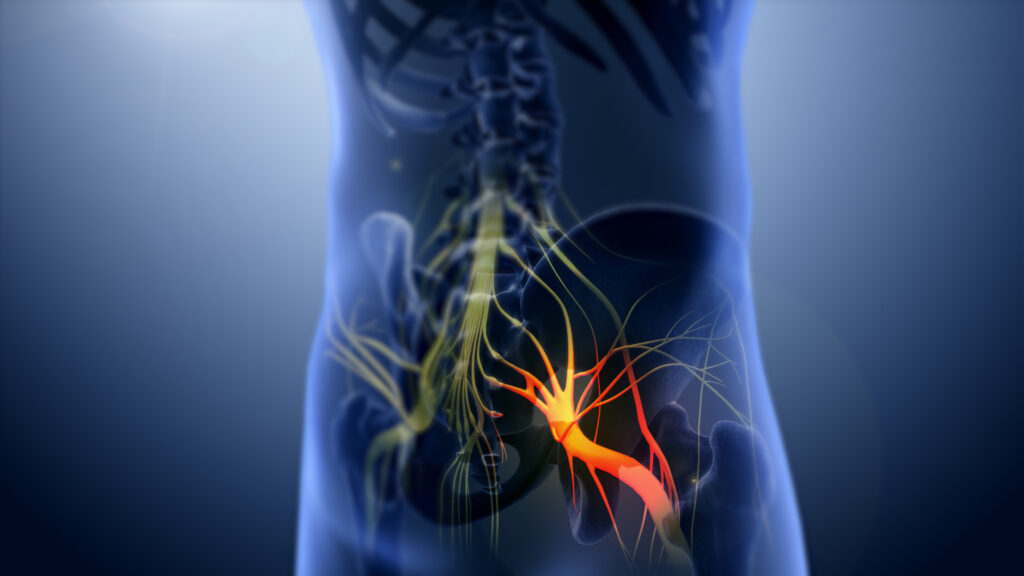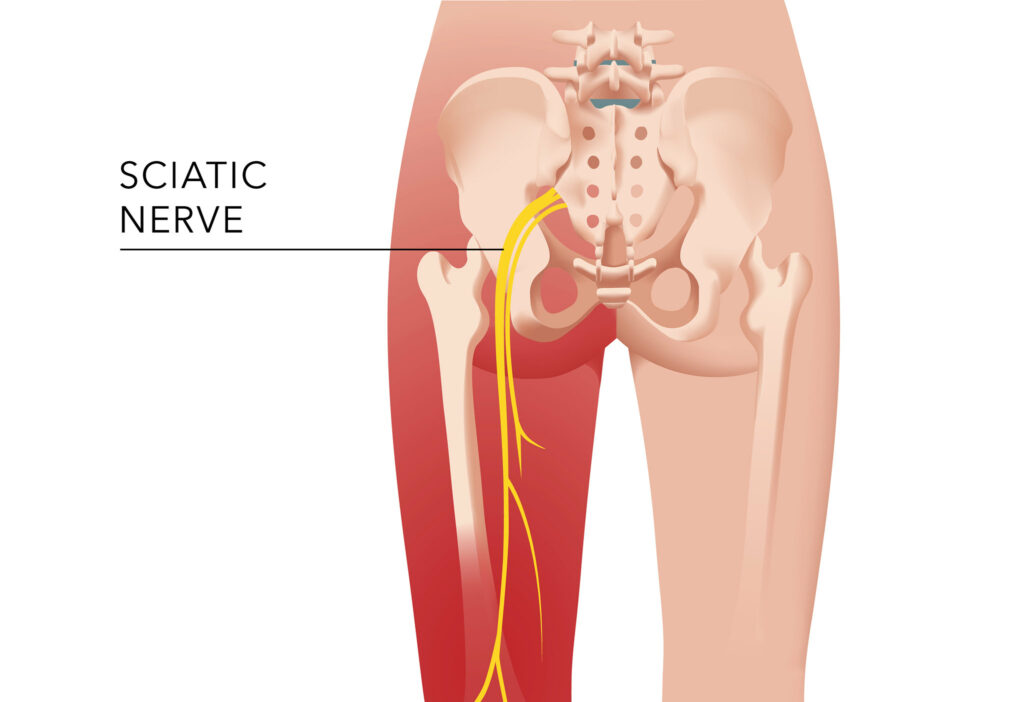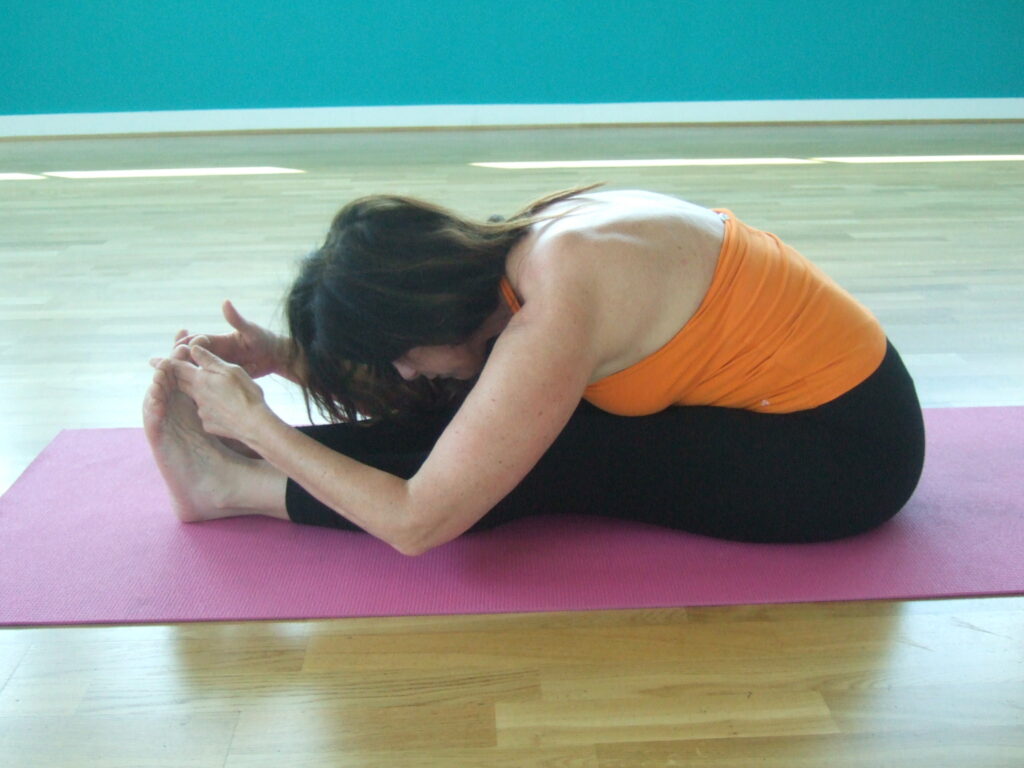

Ah, this sciatica that bothers me… How to relieve or cure sciatica can be a challenge…but not so much for the majority of cases… (depending on your pathology that leads to sciatica). Resolving sciatica requires patience, kindness, and awareness.
One of my students, who practices yoga regularly in her week, came to see me and told me that she had had sciatica for 1 week.
She was very annoyed, we can even say frustrated. She could no longer practice yoga as she likes and considered her sadhana incomplete.
The management of her sciatica
We then discussed about the sessions she practiced to determine the root of her pain. So I asked her:
– What postures did she perform?
– By what means did she arrive at the final postures, ie what type of breath did she use, her speed in the transitions and movements, where did she place her consciousness?
As I know Valérie well, I know that she is mainly Vata.
Vata is her Ayurvedic constitution, so I had some idea to her answers. I know how she likes to practice since she regularly comes to my classes.
Valérie therefore replied that during her personal practice, she did a lot of Ashtanga. A very dynamic and athletic form of yoga. Which, of course, matches his personality being predominantly Vata.
Vata people are dynamic both in body and mind. They like to move quickly, appreciate sustained exercise but go beyond their form of the day. These people are directed more by their mind than by consciousness.
They have great difficulty settling down physically and mentally. They follow the flow as they say. But after a while, the body speaks. He needs rest and a transition to gentler practices: Hatha yoga, meditation, pranayama, Chi gong…
So “my little Valérie” had to calm down her Ashtanga practice. It is neither beneficial for his skeleton, nor beneficial for his mind and in general for his homeostasis.
She specified that she always practiced the same stretching postures for the spine and legs during each of her sessions to work on her flexibility. She remained motionless for a long time in the poses and sometimes relaxing completely without muscle alertness.
Valérie showed me how she practiced: breath, setting up, transition, return and rhythm and which asanas.
How to relieve or cure sciatica: the diagnosis


Her assessment is therefore as follows:
- Predominantly Vata person…with aggravation of vata dosha whose symptom is sciatica. [In Ayurveda these people are more likely to report musculoskeletal disorders and pain than Pitta or Kapha people.]
- She practiced Ashtanga 4 times a week in addition to the class she takes with me during the week.
- Practice a lot of spine stretching postures and stay in the pose for a long time.
- Ujjai breathing is not regular on his practice
- Does not include pranayama in his session to calm his mind and relieve his nervous system
- She works as a nurse
- She eats prepared meals, skips meals and does not eat at the same time all the time
What is highlighted on this report:
- Intense practice and not enough rest
- Irregular breathing
- Too much stretching of the spine and legs
- Stay in stretching poses for a long time
- Unhealthy and irregular diet
- Chronic stress


All his imbalances may have contributed to this sciatica, having never experienced it before. In view of the assessment, the solutions are obvious…
According to Ayurveda, sciatica is typical of Vata imbalances. So as a Vata constitution, Valérie created an excess of Vata dosha in the body by practicing Ashtanga 4 times a week, without integrating any other gentle practice or rest time to regenerate her body and mind.
Care and Support: how to relieve her sciatica
I therefore explain to him that her practice is not adapted to her constitution and her way of life and that she will have to learn to integrate moments of calm, rest, gentle practices so that his body can have time to reconstitute. Practicing Ahtanga 4 times a week is too demanding given her pace of life, I advise her to integrate more hatha yoga and other gentle practices that she likes…even if it’s complicated for a Vata person who likes to move all the time, both in mind and body. All this to integrate after her sciatica is cured.
I also advise her on her diet, which is currently irregular and unhealthy. While she has intense physical practice and stressful work, her body and her mind are starving and lack regenerating, fresh, home-cooked food. She knows that she is a nurse but sometimes repeating things helps to raise awareness to react.
So I ask him his physical feelings about his sciatica to get an idea of the degree of inflammation of the nerve and if we can practice yoga to try to relieve and reduce it. Valerie felt only a slight trip from the L5 lumbar to the top of the buttock, and a constant tension in the rear thigh area.
The symptoms were not dramatic, without neurological disorders and the movement very little inhibited, so we could start practicing certain yoga postures to improve his condition.
Solutions to relieve sciatica
A yoga adapted to his condition
So I offered him a series of postures to practice 5 times and a series of pranayama at the beginning and at the end of the session.
After having followed this session, she is autonomous to practice this session for at least 3 weeks to a month to improve her sciatica.
This session is built without sequence, without flow, without intense effort, just work on each zone in awareness and without forcing. On each posture, Valérie must bring her awareness to her pain, and exhale her pain.
The session is as follows:
1/ Nadi shodhana without breath retention then with retention to calm the mind and focus on what is coming.
2 / Kapotasana
3/ Salabhasana and variants with lifting of one arm and one leg
4/ Balasana
5/ Upavishati Kapotasana or inverted pigeon
6/ Pawanmuktasana
7 / Holotropic breathing exercise
The objective of the first pranayama is to calm the nervous system and to bring the concentration and awareness necessary for the realization of the postures to derive the best benefits.
End-of-session pranayama is holotropic breathing with active inhalations and passive exhalations, complete and rapid.
The goal of holotropic breathwork is to use accelerated breathing to increase self-awareness and deal with past trauma. It allows access to parts of the psyche that cannot be reached under normal conditions.
I use it in Valérie’s case to relieve her anxiety, chronic stress and tension disorders which are due to her Vata imbalance and her lifestyle in general.
Ayurvedic treatment to relieve her sciatica
I also offered him an Ayurvedic treatment called Kati Vasti which is a traditional Ayurvedic treatment used for back pain and disorders of the lumbosacral region including herniated discs, lumbar spondylosis, sciatica, problems spine, etc. We did this treatment for 3 days to follow.
Conclusion to relieve her sciatica
Valérie held up well to the 3-week challenge, which was not easy for her. She who likes to move around so much but also probably the source of her illness.
After 1 week, the feeling of tightness behind her thigh was gone but she still felt a slight trip from the top of the buttocks to the back of the thigh.
After 3 weeks, his sciatica was completely gone.
She also changed her diet, and prepared her meals the night before to take them to work. Valerie manages to give herself some rest and today she even integrated 2 yoga nidra sessions instead of 2 Ashtanga sessions.
She realized that moments of rest and gentleness were necessary to maintain her health, support her body and her mind. She has more energy, clarity and is more positive as she also does pranayama every day since this episode.
To say that it was only the yoga postures that allowed him to heal…it certainly helped but I think a complete approach must be taken.
The body must be understood as a whole: mental, emotions, the physical aspect, the food that we give to our body and its way of life. The intelligence of the body applies by self-healing, on condition of respecting it.
If you are interested in yoga and pathologies, I can only advise to learn the practice which is suits you, you will find concrete information to adapt your practice with my sessions. In addition to my article, I can only advise you to read Piriformis stretching: an effective exercise against sciatica
References
Measure of Significance of Holotropic Breathwork in the Development of Self-Awareness
An Argument for the use of Holotropic Breathwork as an Adjunct to Psychotherapy
Exploring the Therapeutic Benefits of Pranayama (Yogic Breathing): A Systematic Review
Health Impacts of Yoga and Pranayama: A State -of-the-Art Review
Yoga as a treatment for chronic low back pain: A systematic review of the literature
A preliminary clinical evaluation of external snehan and asanas in the patients of sciatica
